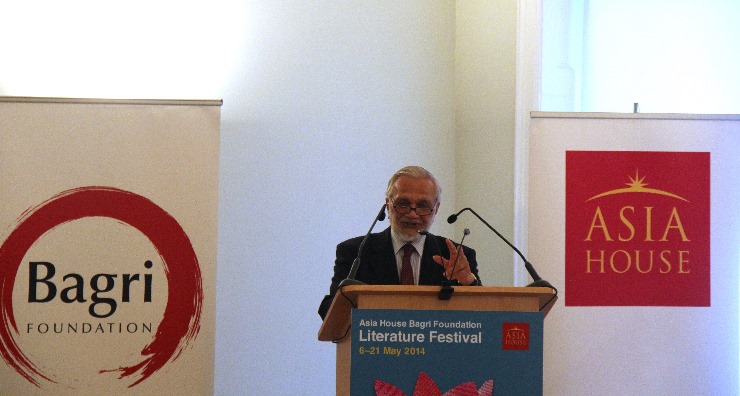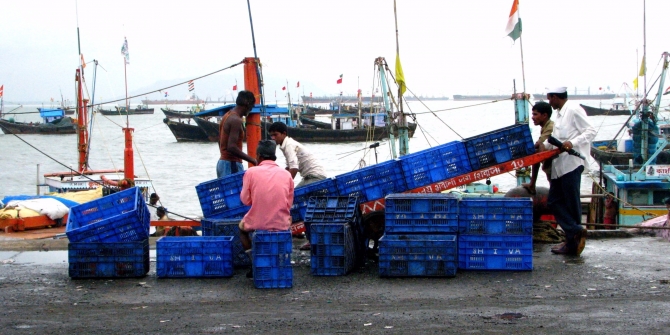Speaking at the Asia House Bagri Foundation Literature Festival in June, LSE Alumnus Lord Bhikhu Parekh, a life peer in the House of Lords, political theorist and author, highlighted India’s contribution to the Great War. Naomi Canton reports on his talk.
This post forms part of a series on India and World War I. Click here to view more posts.
“British India contributed most generously and its contribution was greater than the rest of the Commonwealth put together” said Lord Parekh.
There were 1.5 million Indian volunteers or active soldiers that took part in World War One, out of which 50,000 died, 65,000 were badly wounded and 10,000 reported missing. Two hundred army nurses were killed, of which 98 were from British India. India also supplied 170,000 animals and equipment for military warfare, as well as 3.7m tonnes of supplies. Indians won 13,000 medals including 12 Victoria Crosses.

All of this, including the salaries of the Indian soldiers, was paid for by the Indian taxpayer and British India raised an approximate £2 billion loan (at today’s rate).
Indian soldiers brought valuable skills that the British military forces did not have – such as patrolling in a form that is suited to trench warfare – having been involved in skirmishes in the Himalayas.
But in the first few weeks they lost nearly 50 per cent of their soldiers.
“Many of them were not trained or properly equipped when they came here”.
Parekh said the British had deliberately kept the Indians one generation behind with weaponry after the Indian Rebellion of 1857. “The result was heavy casualties among the Indian soldiers when they took on the Germans”.
German propaganda made charges that Indian and African soldiers were involved in brutality in the war, such as cutting off fingers, heads and hands from victims as “trophies.”
But Parekh said: “It was investigated at the time and subsequently, but there was no truth in it except that a very small percentage of Africans brought with them this practice of taking heads of the enemy with them but no Indian soldiers were involved.”
Parekh said he did not have figures on exactly how many Indians deserted, but he believed the number to be extremely small. “Most who deserted were Pathans (the Pashtun diaspora) who knew they had nothing to fear as their homeland was outside the British jurisdiction,” he added.
The wounded Indian soldiers were looked after in Brighton Pavilion which, at the time, was turned into a military hospital, as were other British buildings. “What was striking was that even in these hospitals, religious and caste rules were observed. High caste soldiers were looked after by the high caste cooks. No female white nurses were allowed to look after the wounded Indian and African soldiers,” he said.
“They did not want the Indian soldiers to get into the habit of thinking that white women were available to them in the UK, in case it had similar consequences in British India,” he added. However, the Indian soldiers were generally well looked after in these hospitals.
But according to Parekh, one complaint they made was that they had to be chaperoned wherever they went, as the colonial government was afraid they might disappear into British society, get to know British people too closely or form liaisons with British women.
However, since it was not a conscript army, who were the 1.5m Indians that fought? And what motivated them to join the British Army, their colonial rulers?
Approximately 80 per cent were Muslim and Sikhs and 20 per cent Hindus. The majority (half a million) hailed from what is now known as the Punjab region; 281,000 came from present-day Uttar Pradesh; 71,000 from the region in West India now known as Maharashtra; 93,000 from present-day Tamil Nadu; 42,000 from the area in the East now known as Bihar.
There were several reasons why they volunteered. Firstly it brought money. Many of them were farmers from the Punjab and Uttar Pradesh (known as Jats) and so fighting in the war provided a lucrative source of income for them.
Secondly, fighting in a war elevated them to the caste of Kshatriya (warrior caste). “In a caste-ridden society your social status rises if you are a soldier. It brings you and your family certain prestige to have fought for the Empire and to have gone to Europe and it enhances your caste and social status for future generations,” he said.
Thirdly, there was an enormous sense of loyalty to the King, rather than to the Empire.
Fourthly, they wanted to prove to the Europeans that when it came to fighting or dying they were in no way inferior to their rulers.
Parekh highlighted that even Gandhi supported World War I and in 1916-17 even went about recruiting soldiers for it, believing that it would facilitate India’s fight for independence.
The War did contribute to the success of the Indian Freedom Struggle. Since hundreds of thousands of Indian soldiers had tasted life in a free society, they thought to themselves, “Why should we be a nation of slaves, why can’t India be free?”
They had seen prosperity and affluence in Europe and compared it to the depressed conditions in British India and wondered why India was so poor, he said. The result was increased demand for freedom. “It helped prove they were just as brave and just as clever as the Europeans and therefore the old racist idea that Indians were somehow inferior almost disappeared and they developed a profound sense of their own dignity,” Parekh said.
Despite all this, in many history books, the “colossal” contribution of Indian soldiers is merely a “marginal footnote,” he pointed out. Yet 1.5 m took part and 50,000 died. “These are not small numbers,” Parekh said.
The commemoration of this sacrifice had been neglected in India as well. “You don’t see monuments in India commemorating the contribution of Indian soldiers to World War One. India Gate in Delhi was originally created as a monument for the First World War and then it became a symbol for all wars. No post-Independence government has thought it necessary to commemorate the Indian contribution to World War One,” Parekh said. He said he did not think they were viewed as traitors in India as what they did had been supported by the Father of the Nation.
“I think we should press both the British and Indian Government to recognise the contribution of Indian soldiers and the War’s contribution to India,” he concluded, adding it would help cement multicultural relations in the UK.
“I think it makes British people realise what they owe to Indians. Their history was not enacted just by them. If you go back in history you see Indians, Arabs and other races all playing an important role; throughout Britain’s history they are as much the architects of British history, a part of British history as the British themselves.”
He continued: “It is important for Indians in the UK to realise our history did not begin in the 1950s. Indians have been present in the UK in some form or another for several hundred years. It’s good for Indians in the UK to realise that they are part of Britain’s history and Britain’s history is ours – it helps bond a society and form shared memories of mutual gratitude.”
This is a shortened version of an article which originally appeared on the Asia House website. It has been reproduced with kind permission.
A podcast of Lord Parekh’s speech at Asia House is available here.






